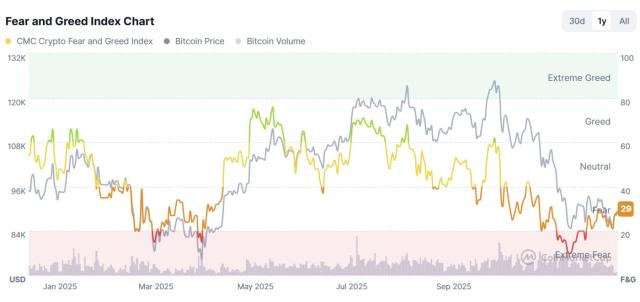Author: xparadigms, Four Pillars
Translated by: Block unicorn
Key Points
USDT has become the dominant stablecoin, with its market cap growing from $80 billion to $144 billion in the past year, but its market dominance has dropped from 70% to 61% as other stablecoins are also expanding.
Tether USDT natively supports about 12 blockchains, while bridged versions of USDT exist on over 80 blockchains, introducing additional risks and management challenges due to reliance on third-party bridges and lack of direct Tether oversight.
Tether addresses expansion challenges through horizontal strategies (such as USDT0 multi-chain token using LayerZero OFT for cross-chain transfers) and vertical strategies (like supporting Legacy Mesh on Arbitrum and Bitcoin sidechain Plasma), aiming to unify liquidity and build dedicated ecosystems.
As stablecoin issuers expand, interoperability has become the first step in expansion. LayerZero provides customizable infrastructure and broad blockchain support, becoming the primary gateway for such cross-chain growth strategies.
Preface
USDT has brought dollars on-chain, transforming them into global digital assets. It has become the largest stablecoin, with a market cap exceeding $140 billion. Despite numerous past rumors about insufficient collateral, it has maintained its leading stablecoin position. As the stablecoin market expanded, Tether USDT's market cap grew from $80 billion to $144 billion, increasing by 80% over the past year.
While USDT continues to grow, other stablecoins are also expanding, causing USDT's market dominance to drop from 70% to 61% over the past year. To maintain growth, USDT has taken bold approaches to expand cross-chain capabilities, from implementing the multi-chain token USDT0 supported by LayerZero OFT to building hubs centered on Legacy Hub and Plasma. Through these methods, they are addressing past challenges.
Let's first look at the problems they face.
1. Tether USDT Expansion Plan Issues
1.1 Tether USDT Supports Only 12 Chains
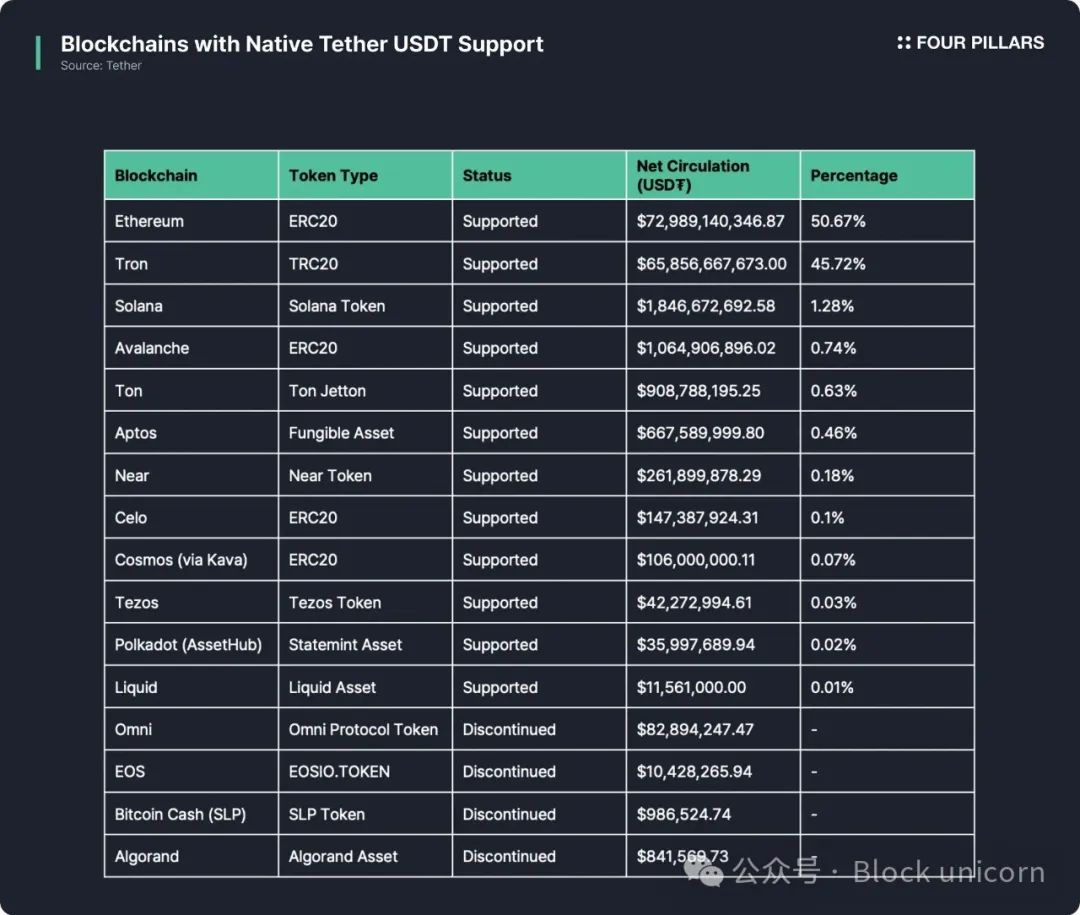
Source: Tether Official Knowledge Base | Supported Protocols and Integration Guide
In 2014, Tether's stablecoin USDT was first launched on the Omni Layer protocol on the Bitcoin blockchain. Over the years, Tether expanded USDT issuance to other major blockchains, including Ethereum (ERC-20), Tron (TRC-20), Binance Smart Chain (BEP-20), Solana (SPL), etc. As of early 2025, Tether natively supports USDT on approximately 12 blockchains. Nevertheless, defillama data shows USDT exists on over 80 blockchains. Notably, USDT on over 50 blockchains is valued at more than $1 million, and among the top 30 blockchains in USDT trading volume, 17 rely on bridged token versions rather than native support.
When USDT is not natively supported on a blockchain, it means Tether does not directly issue or redeem USDT on that chain. Instead, third-party bridges lock native USDT on supported chains and issue corresponding "wrapped" or "bridged" versions on the new blockchain. For users, this introduces compatibility issues and additional risk layers with bridged versions. The security and reliability of bridged USDT depend entirely on third-party bridge operators, not Tether itself. If a bridge is hacked or encounters problems, users may lose bridged USDT, and Tether is not responsible for these losses. Only USDT on natively supported blockchains is directly endorsed and redeemable by Tether, so holding bridged USDT means relying on the bridge's solvency and security.
Additionally, Tether has stopped minting USDT on multiple blockchains due to low usage or security issues. These include Omni Layer on Bitcoin, AssetHub on Kusama, Simple Ledger Protocol (SLP) on Bitcoin Cash, EOSIO.TOKEN on EOS, and Algorand. While potentially redeemable for a limited time, no new USDT tokens are issued on these networks.
Although USDT seems available on numerous blockchains, only a few are natively supported by Tether. On all other chains, users interact with bridged versions of USDT, which come with additional risks not applicable to native tokens.
1.2 Bridged USDT is Increasing
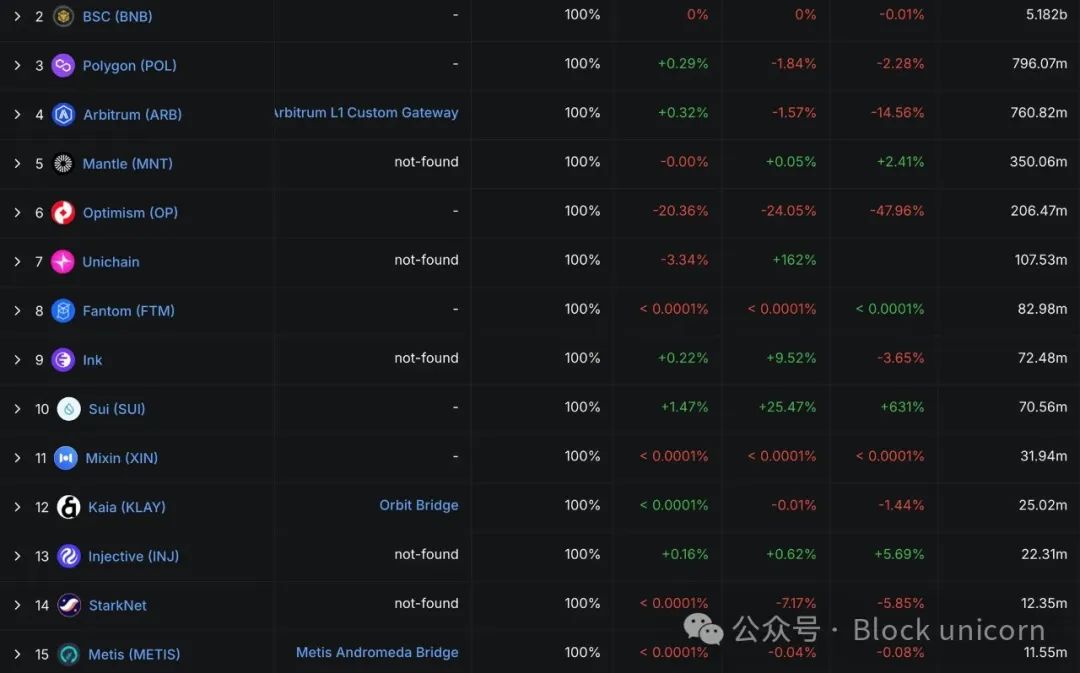
Source: Tether: Circulating Supply and Statistics - defillama
Currently, the USDT circulating supply on Ethereum is approximately $64.94 billion, with about $8 billion of USDT bridged to other blockchains. For example, approximately $5.2 billion of USDT has been minted through the BSC bridge on Binance Smart Chain. Additionally, several major Layer 2 networks—such as Arbitrum, Polygon, Optimism, and Mantle—operate their own native bridges for USDT transfers. Other Layer 1 blockchains, including Fantom, Kaia, and Sui, rely on third-party bridges to facilitate USDT movement between chains.
From Tether's perspective, the growth of bridged USDT presents significant management challenges. Tether can only directly monitor and control USDT issued on networks with native support. Once USDT is bridged to other chains via third-party bridges, Tether loses direct oversight of these tokens. This fragmentation makes it increasingly difficult for Tether to track total supply, ensure compliance, and manage risks introduced by expanding blockchains and bridging protocols.
Ultimately, while the rise of bridged USDT enhances liquidity and interoperability in the crypto ecosystem, Tether as the issuer also faces new complexities.
1.3 Tether is Leaking Value to Tron
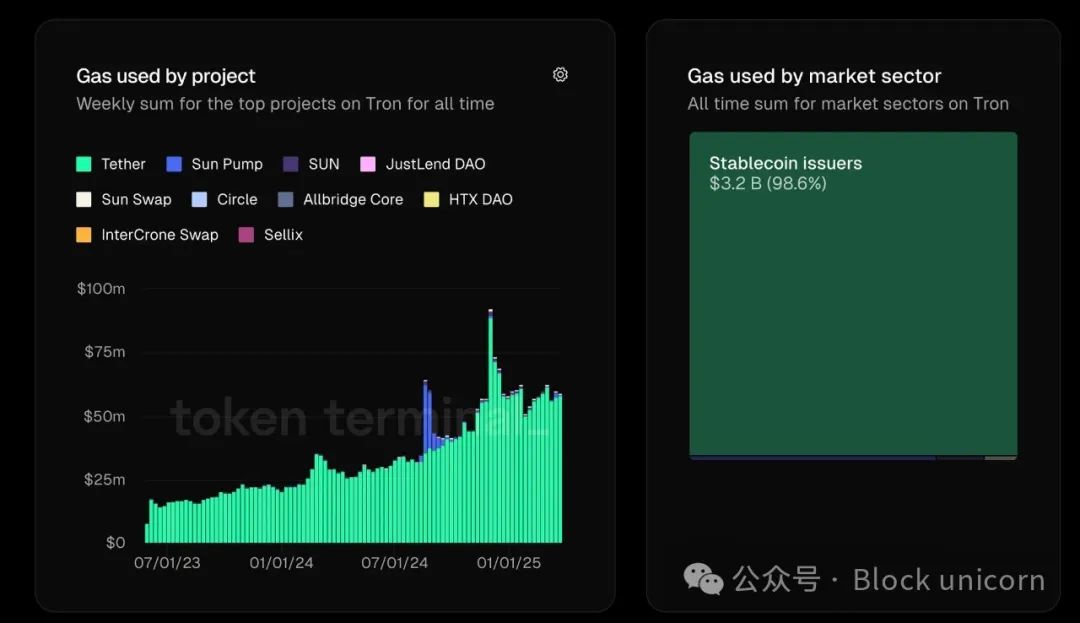
Source: Tron Gas Usage | Token Terminal
Stablecoins are the pillars of on-chain finance, serving as the primary medium for settlement, trading, and lending. This phenomenon is particularly prominent on Tron, where stablecoin-related transactions dominate network activity—USDT alone accounts for over 98% of the network's stablecoin supply, covering almost all transaction volume.
Currently, the total stablecoin market cap on Tron is $71.5 billion, with USDT dominating at over $70.9 billion in circulation, far surpassing other stablecoins like USDD, TUSD, and USDC, which occupy only a small market share. This dominance is so complete that Tron could be called the "USDT chain," with 98% of transaction fees and 99% of transactions driven by USDT transfers. As a result, Tron captures over $2.5 billion in annual fees from these activities.
But this raises a key question: What if Tether, the issuer of USDT, launches its own blockchain, not only capturing transaction fees but also capturing the ecosystem value currently flowing to Tron? Tether has demonstrated the ability to quickly mint and move billions of USDT to meet market demand, often adjusting supply between blockchains to optimize costs and efficiency. If Tether incentivizes major centralized exchanges (currently holding about 30% of USDT on Tron) to migrate their USDT holdings to a Tether-operated chain, it could redirect network activity and fee income to its own ecosystem.
This move could fundamentally reshape the economic model of stablecoin infrastructure. For exchanges and users, migrating to a Tether native chain might mean lower fees, faster settlements, and potential rewards for early adopters. For Tether, this would unlock new revenue streams and enhance control over its stablecoin environment.
In the long term, this could create a win-win situation: users and exchanges benefit from a layer designed for efficient settlement, while Tether captures value currently leaking to third-party blockchains. Given USDT's dominance on Tron and the broader crypto ecosystem, Tether's opportunity to internalize this value is both significant and increasingly feasible.
2. Tether's Strategy - Horizontal and Vertical Expansion
To address the challenges faced by Tether USDT, there are two potential solutions. The first is to achieve horizontal expansion by implementing a better cross-chain strategy across the existing 300+ blockchains and continue growing. The second is to achieve vertical expansion by owning the infrastructure stack to capture more value and provide more services.
2.1 USDT0 - Horizontal Expansion Using LayerZero OFT
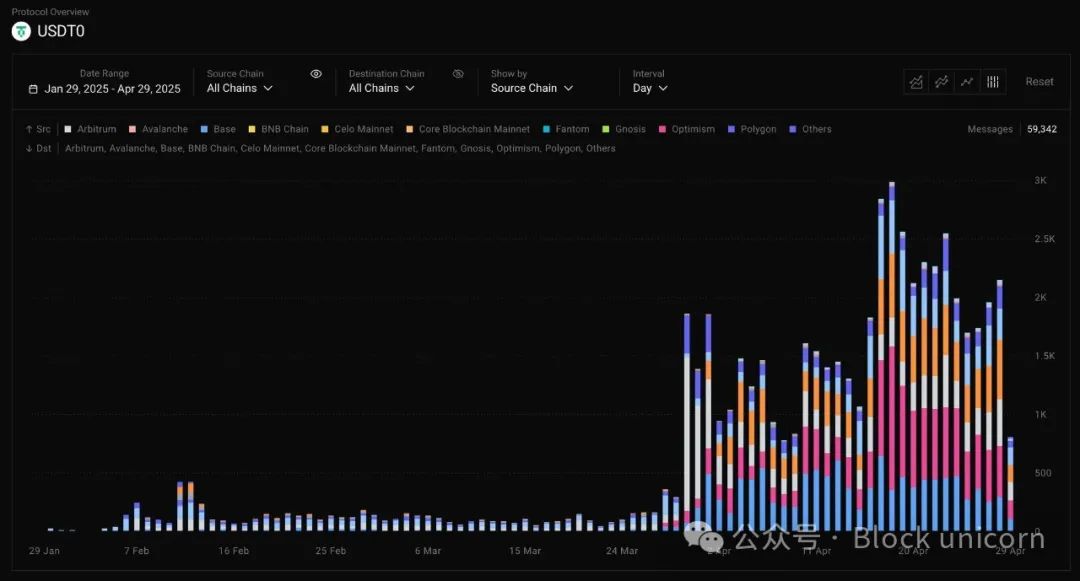
Source: LayerZero Scan
Tether has launched its multi-chain version of USDT, called USDT0. This token now easily expands to other blockchains or Rollups using LayerZero's OFT token framework. Since its launch a month ago, its total locked value (TVL) circulation supply is $971 million, with total cross-chain transactions exceeding $3 billion. Now, the cost of sending USDT across different blockchains is lower than ever before.
This is thanks to LayerZero's OFT standard, which allows tokens to be locked or burned on the source chain and minted on another chain. USDT can be locked on natively supported chains like Ethereum, Tron, and TON, and then minted on unsupported chains like Arbitrum, Optimism, and Berachain as USDT0. For chains that do not support transfers, the system uses a burn and mint mechanism. This approach simplifies supply management across different networks while reducing the need for native support.
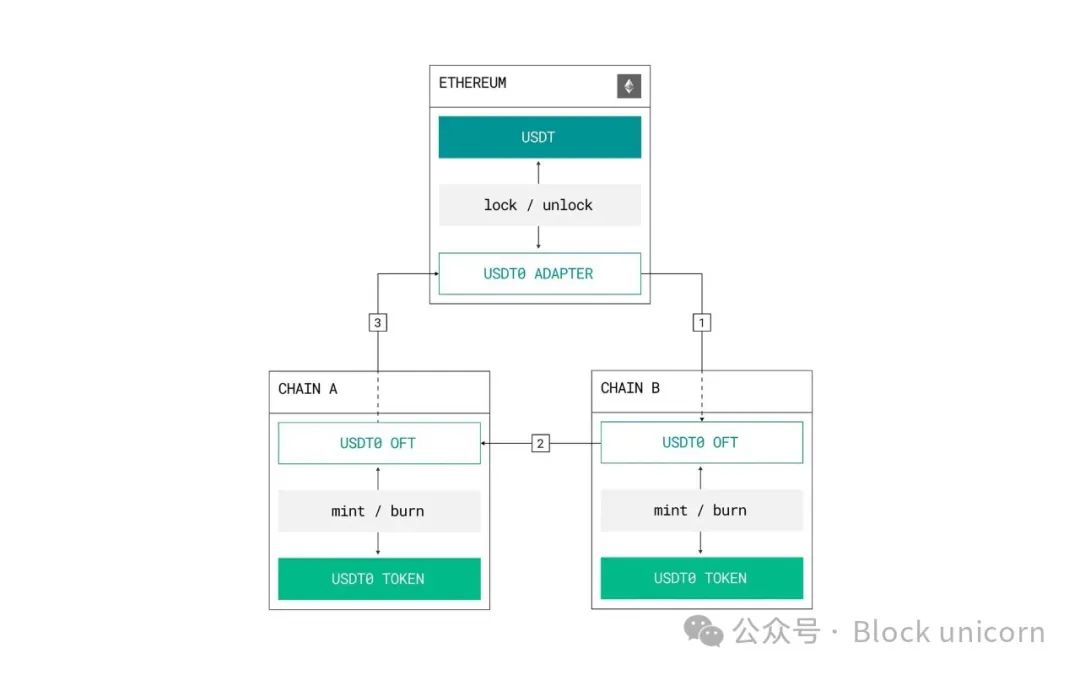
Source: "USD₮0 Mechanism Design Review" | Chaos Labs
LayerZero achieved "issuer-aligned interoperability", with USDT0's cross-chain operations verified by two entities: USDT0 DVN and LayerZero DVN. This means cross-chain transfers only occur when approved by the issuer's USDT0 operated infrastructure.
To support a new chain with USDT0, two conditions must be met: LayerZero must support the chain, and the team must find or begin supporting the chain's DVN routing. Currently, LayerZero supports about 131 mainnets, including most major networks, so USDT0's expansion is now more of a strategic decision than a technical barrier.
2.2 Legacy Mesh and Plasma - Building a Hub for USDT
Tether achieves vertical expansion through two key initiatives: building Legacy Mesh for USDT0 and the Bitcoin sidechain Plasma. Legacy Mesh serves as a central network connecting existing USDT deployments with USDT0 (the multi-chain version for chains lacking native USDT support). Arbitrum acts as the central hub, aggregating liquidity pools and facilitating inter-chain transfers using LayerZero's communication protocol. This enables users to seamlessly move assets between Ethereum, Tron, and TON and USDT0-supported networks like Arbitrum, Ink, and Berachain. With Arbitrum's connections to Ethereum, Tron, and TON, it unifies 98% of USDT supply, while Legacy Mesh creates a tightly integrated ecosystem for stablecoins across mature and emerging blockchains.
The second initiative, Plasma, takes a bolder approach by building a Bitcoin sidechain focused on payment efficiency. From day one, USDT0 will be supported on Plasma and maintain direct connections with USDT on Ethereum, Tron, and TON.
Legacy Mesh and Plasma together create a comprehensive liquidity and ecosystem hub for USDT. Arbitrum serves as the liquidity pillar, while Plasma optimizes transaction throughput and develops its own dapp ecosystem. This synergy allows USDT to expand its influence in both liquidity and applications.

Source: "Introducing Legacy Mesh: Your USDT, Anywhere, Anytime, Now Everywhere" — USD₮0
3. Interoperability is the "First Step" in Stablecoin Expansion Strategy
Stablecoins make fiat currency a semi-global currency, while interoperability makes stablecoins a truly global currency. As the blockchain ecosystem expands to over 300 networks, stablecoin use cases and user bases become increasingly fragmented. For stablecoin issuers, early focus on a single chain may be effective, but long-term growth and adoption depend on cross-chain strategies that enable tokens to move seamlessly across multiple blockchains.
A typical example is the Wyoming Stablecoin (WYST), the first fully reserved, state-issued stablecoin in the United States. By partnering with LayerZero and adopting its OFT standard, WYST can be issued and used on multiple major blockchains, including Ethereum, Avalanche, Solana, and more. This interoperability not only expands WYST's user base but also reduces operational costs and improves the experience for institutions and individuals who need to transact or settle across different networks.
The WYST example highlights a broader industry trend: interoperability strategies must progress in tandem with issuance strategies. As stablecoins seek broader adoption, LayerZero, with its customizable infrastructure and extensive chain support, is becoming the gateway for cross-chain expansion, enabling issuers to efficiently enter new markets and use cases.
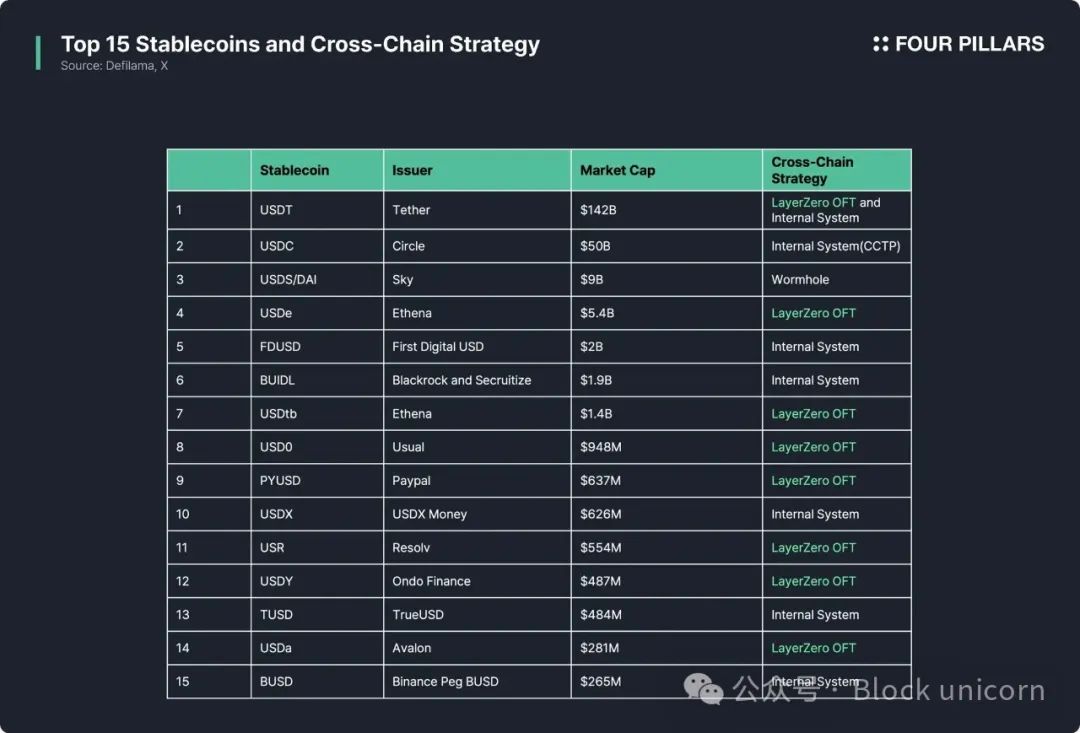
Source: "Accelerating Asian Stablecoin Development Through Interoperability" | Four Pillars







